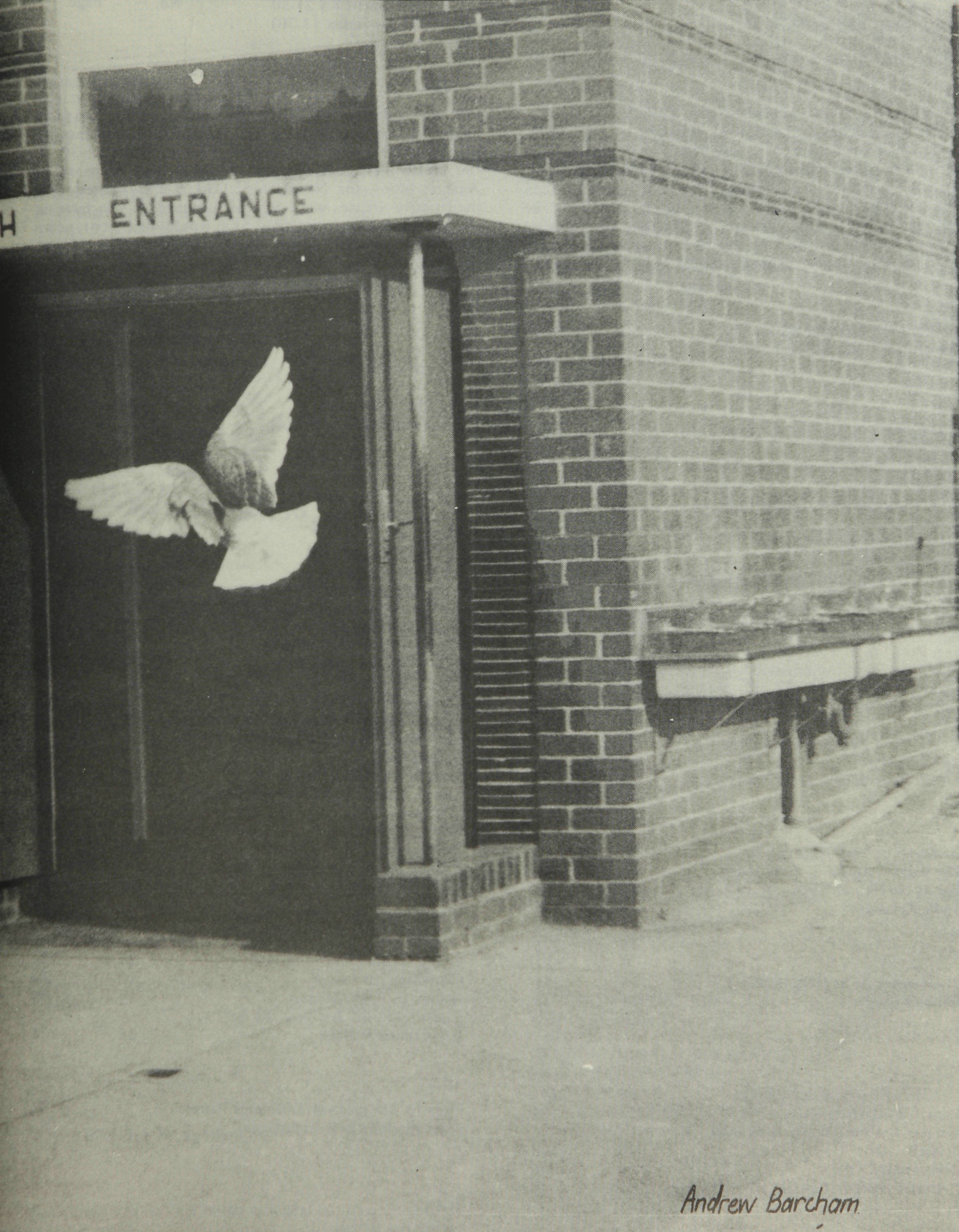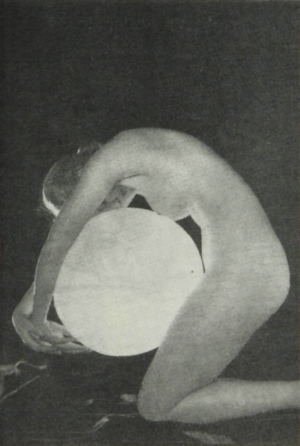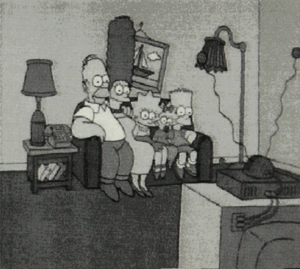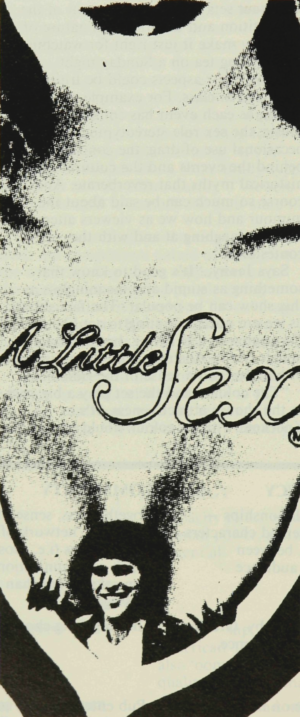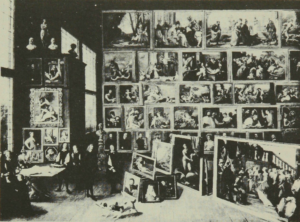A Polemical Introduction
“Few students ever acquire skills in analysis of newspapers. Fewer have any ability to discuss a movie intelligently. To be articulate and discriminating about ordinary affairs and information is the mark of an educated man. It’s misleading to suppose there’s any basic difference between education and entertainment. This distinction merely relieves people of the responsibility of looking into the matter. It’s like setting up a distinction between didactic and lyric poetry on the ground that one teaches, the other pleases. However, it’s always been true that whatever pleases teaches more effectively”.
– Marshall McLuhan
“A teacher can’t communicate with kids unless he knows what they’re really like. This doesn’t mean that you have to accept their values … wherever you want to take them, there is only one starting place – where they are now”.
– John M. Culkin
“No one wishes to embalm movies as had been done to literature in the schools”.
– Henry E. Putsch
The concluding sequence of “Chinatown” has been described as opening a chasm beneath one’s feet.[1]See M. Wilmington ‘Chinatown’ in The Velvet Light Trap No. 13. Perhaps the closest a teacher of film can come to experiencing this cold terror is sitting with a large number of students in a room or hall, watching their restlessness and boredom grow, and knowing that the film has another hour to run. In attempting to explain how much a situation can develop, I am going to rely heavily on the work of Thomas Elsaesser.[2]T. Elsaesser ‘Narrative Cinema and Audience-Oriented Aesthetics.’ British Film Institute.
A film not only draws an audience into the particular world, but simultaneously the viewer immerses the film into his (psyche) world. Thus communication between an audience and a film depends on the way this ‘field of force’ establishes itself, and the communication may lapse if the energy flow from the viewer fails to find an appropriate channel. Elsaesser writes that if the “energy and the defensive mechanisms of the viewing situation are not managed by a film, or where tension is not ‘objectified’ in terms of conflict, suspense etc. the audience often produces fall-out reactions such as restlessness, aggressiveness … or a falling of boredom, claustrophobia.”[3]T. Elsaesser Op cit. P. 4.
The viewing situation, coupled with the fact that a person watches a film not at the pace one chooses himself, but in a sequence selected by someone else causes impulses to rise, which demand to be compensated, transferred and managed. The most appropriate way of accomplishing this, according to Elsaesser, is to concentrate on a certain type of cinema – “the narrative cinema, working with functional, spectacular, dramatic or illusionist means and embodying a very conscious manipulation of audience responses”.[4]T. Elsaesser Op cit. P. 3.
Genre films, with linear, consecutive plots, punctuated by an alternating rhythm of conflict, climax and resolution are the most readily accepted films by audiences. Elsaesser suggests that this is because these dramatic configurations “strongly reflect the dynamics of the psycho matrix: precisely because of the high degree of schematisation. The plots provide a possible way of regulating psychic pressure, and on this level, they could be seen as the primary vector of energy, a macro-structure of cathexis, projecting and objectifying libidinal and aggressive drives.[5]T. Elsaesser Op cit. P. 5.
The net effect of this is that if a teacher wishes to retain the attention of a large audience of students, he should select films which contain a number of the following ingredients: energy intensive heroes together with large doses of action, violence and eroticism; phallic models of identity and self assertion, plus the accentuation of voyeuristic and fantasising tendencies. Obviously there is little point in basing a programme of film study on Z-grade movies filled with sex and violence, peopled by stereotypes and two dimensional characters solely because it would retain student interest. However, it would be equally foolish to show film with supposedly high aesthetic qualifications (Resnais’s “Last Year At Marienbad” for example) to a third or fourth form and expect them to respond. A teacher must begin by considering the interests and tastes of the students and proceed from there. Thus I would suggest that the staple of any film study course should be narrative feature length films, selected around a number of themes or genres. Aesthetic, historical, technical and other considerations will influence the choice but they should not be the prime or sole determinants.
The film studies courses that I am presently engaged in are designed to question the notion of realism and genre, examine narrative patterns and understand the archetypal–mythological patterns of the cinema. However, film is such an eclectic medium that political, sociological and feminist implications continually arise.
Notions such as realism are frequently used in film discussions and they generally lead on to considerations of other terms such as artificial, naturalistic, expressionistic and verisimilitude. At a recent screening of “King Kong”, those students who disliked the film overwhelmingly gave their reason as “unrealistic”. Andre Bazin, Siegfried Kracauer and others have used realism as a criteria to make aesthetic judgements of a film. However, a realist aesthetic of the cinema is extremely restrictive and of little value in making judgements of contemporary films. One must agree with Soviet film maker and theorist Pudovkin who stated that “between the natural event and the appearance on screen there is a marked difference. It is exactly this difference that makes film an art”.
The achievement of film’s formal operations (lighting, editing, camera angles, framing, etc.) in terms of imagery and space/time manipulations do not correspond to anything in the physical world but have greater similarities to dream operations. Real time and real space are banished. A film audience tends to believe what it conceives rather than what it actually sees. Elsaesser writes that the “function of mimesis in the narrative cinema is of a primarily psychological kind and only to a secondary degree belongs to the sphere of perception at all”. Therefore, it is not a question of the cinema reproducing real objects, but creating filmic objects which exist in their own right and only borrow their appearance from nature. The important factor is the ease of acceptance of the audience of this reality. Realism is entirely in the eye of the beholder.
As a general rule it is better to base any discussion of films on the images presented rather than the story line of content. Questions such as “What did you see?” or “What did you hear?” are more useful than story outlines. In this respect television commercials are a good introductory crash course in speed viewing. Continuity is demolished by jump cuts, and dissolves blur space/time boundaries. Also, they challenge the viewer to synthesize impressions at an ever increasing rate.
Storyline, as expressed in the dialogue, is only one element in a film – the mise en scene is often a vital ingredient. The work of top directors such as Fritz Lang, Minnelli, Hawks, Ray, Losey confirm that the relationship of plot to meaning is far from simple. Out of conventional plots comes highly individualised levels of discourse.
The question should be “how” is the meaning expressed rather than “what” does a film mean. The discovery that visual imagery could suggest meanings beyond its story expressed through dialogue, made possible a distinctly cinematic form. Thus film communicates by music, speech, visual action, as well as silence, and lighting, detail and abstraction.
Before moving on to specific examples, I would like to briefly discuss the archetypal mythology of the cinema which is important in any discussion of film genre.
Myths reflect or portray basic instincts (archetypes) and by patterning one’s life on them one manages to solve the conflict which arises in oneself. The Gilgamesh Epic, for example, is the oldest written story known and it reflects the needs of man to see himself and come to a working solution of his inner problems. Another Mesopotamian myth, the Enuma Elish, served as a paradigm for life and for spiritual culture. As the central cultic liturgical text for the Akitu (New Year’s) Festival, the Enuma Elish was in many ways the central myth of Babylonia. The sun rise services celebrated in Christianity at Easter time in honour of the rising sun-god was originally Marduk in the Enuma Elish but replaced by Christian mythology. Marduk, the sun-hero of Enuma Elish, is the ideal for all mankind. As the great god, man’s ideal for life, he portrays in symbolical form the pattern for living which all should imitate, just as does Christ in the Christian myth. In telling of the birth and life and victory of Marduk, the myth teaches the struggle each person must go through to become a true individual; in following the paradigm, man breaks from his own childhood ties to become an authentic adult.
The myths, fairy tales, imaginative literature and films are all built around a small handful of archetypal patterns. The number of archetypes is limited and their character indicates that they are the basic situations met in human development. Myths, and films, are basically representations of our desires and our fears. If the Gilgamesh Epic provides an early example of man’s search for immortality, then so does James Whale’s 1935 film “The Bride Of Frankenstein”. A classic Western such as “Shane” has its immediate roots in the 19th Century populist tradition, but even stronger ties with Arthurian tradition, with its image of knights and concept of the guest, which in turn forms part of the Gilgamesh Epic. The mythical core of the honor film is also quite evident. Boris Sagal’s “The Omega Man” has obvious parallels with the Christ story (Heston is stoned when first captured by Mathias and the family; he is finally speared and dies in a Christ-like position. Also, it is his blood which is going to regenerate mankind.) This, in turn, is a direct descendant of the saviour myths. The sense of sin and salvation is universal in religion; every culture provides a saviour-god who came to earth (Heston ‘dies’ and is resurrected after a helicopter crash) to save mankind. In Ugarit it was the Baal tale; in Mesopotamia the Inane/Ishtar-Tamnuz (and later Marduk) cult; in Egypt the Osiris–Horus story; in Iran it was the cult of Mithras and in Palestine it was first the Exodus and later the Christ myths.
Myths and films could be considered examples of pre-logical thought (logic in the technical Aristotelian sense which means the application of scientific method to experiences.) Pre-logical thought is based on emotions, wishful thinking and intuition. It makes great use of symbolism, in which words are not to be taken at face value but have an inner meaning. If one part of our mind consists of the active memories and conscious thinking (the ego) then there is also a concurrent process, the unconscious. The unconscious works with symbols: it takes experiences from our everyday life and rearranges them as if it were forming a kind of drama to express this inner or hidden meaning. The late Professor Henri Frankfort described this process as ‘speculative thought.'[6]See H. Frankfort, ‘Before Philosophy’ Pelican. But where then is speculative thought allowed to range today. Frankfort writes that its “main concern is with man – his nature and his problems, his values and his destiny. For man does not quite succeed in becoming a scientific object to himself. His need of transcending chaotic experience and conflicting fact lead him to see a metaphysical hypothesis that may clarify his urgent problems.”
If we accept contemporary cinema as part of the process of speculative thought, then this reveals a disturbed society. The “Parallax View”, “The Conversation”, “Executive Action”, “Don’t Look Now”, “Chinatown”, “Pat Garrett and Billy The Kid” (Peckinpah’s version, not M.G.M.’s mutilated release), leave their audiences at the end of a blind alley, and, in most cases refuse any feeling of catharsis. The characteristic moods of the Forties ‘film noir’ were claustrophobia, paranoia, despair and nihilism, and the mise-en-scene was designed to unsettle, jar and disorient the viewer in correlation with the disorientation felt by the noir ‘heroes’. However, in the Seventies the intensity of film noir moods, especially paranoia, has reached a new peak. Mike Hodges’ “The Terminal Man” for example, emphasises a colourless society with an overt use of black and white in a colour film (clothes, walls, sky, television etc.) The references to paranoia in the film are even more striking. The film opens with an eye staring out at the audience from one corner of the black screen. This device is repeated several times throughout the film and it also concludes the film, only this time a voice announces “you’re next”.
Film study with the students so far this year has belonged basically to the romantic mode.[7]See N. Frye ‘Anatomy of Criticism’. Princeton for discussion of the various literary modes. This is because this area lends itself so well to a discussion of concepts outlined above, for as Frye points out, the romance “does not attempt to create ‘real people’ so much as stylized figures which expand into psychological archetypes”.[8]N. Frye Op cit. P. 304. The first batch of films comprised “Frankenstein” (Whale 1931), “King Kong” (Schoedsack 1933), “Curse of the Cat People” (Lewton/Wise/Fritsch 1944), “The Fearless Vampire Killers” (Polanski 1967), “Beneath The Planet Of The Apes” (Sagal 1971) together with excerpts from “The Mummy’s Curse” (Goodwin 1944) and “Planet Of The Apes” (Shaffner 1968).
These films were not selected with any aesthetic considerations in mind (although “The Fearless Vampire Killers”, “Curse of the Cat People” and “Frankenstein” would rate highly in this regard.) They were mainly chosen to illustrate the notion of genre, together with a critical look at the concept of realism. Students who were critical of “King Kong” on the grounds of being unrealistic but accepted other films in this series (especially “Beneath the Planet of the Apes”) were asked to explain the paradox. Also, the films are useful to introduce a discussion of mythological patterns and even Freudian fears and aspirations.
This was followed by a further series of films which were linked by a more popular notion of ‘romance’, but also raised sociological and feminist issues. The films included “Heaven Can Wait” (Lubitsch 1943), “Casablanca” (Curtiz 1942), “Summer Storm” (Sirk 1944), “Petulia” (Lester 1968), “Message To My Daughter” (Lewis 1974), “Our Time” (Hyams 1974), “Svengali” (Mayo 1931), and “Chinatown” (Polanski 1974). Of these films “Petulia” with its frequent movement within space and time and continual verbal and visual play received a poor reception. Its violation of narrative pattern and genre considerations supported Elsaesser’s arguments regarding the energy flow from the viewer failing to find an appropriate channel. Curtiz’s “Casablanca” is extremely useful in examining the archetypal nature of the propaganda film. In this regard, Jung points out that the “Moment when the mythological situation appears is always characterised by a particular emotional intensity, it is as if forces were liberated that we did not know existed. All that related to the archetype is ‘moving’ i.e. functions by working up a stronger voice than our own. Whoever speaks in primordial images moves and overwhelms and releases all the helping forces, which, again and again, have made it possible for humanity to save itself from all danger and to survive the longest night.” Thus the ritualistic pattern of the hero saving the virgin from the clutches of the beast (substitute Bogart, Bergman and Veidt in “Casablanca”) is one of propaganda’s favourite motifs. “Casablanca” is representative of the best narrative tradition which “has been to transform – partly because maintaining a very active phatic contact with its audience – fantasy material and popular mythology into secondary discourse, often about these fantasies and the nature of the cinematic communication in a given social context.”[9]T. Elsaesser Op cit. P. 12.
Endnotes
| 1 | See M. Wilmington ‘Chinatown’ in The Velvet Light Trap No. 13. |
|---|---|
| 2 | T. Elsaesser ‘Narrative Cinema and Audience-Oriented Aesthetics.’ British Film Institute. |
| 3 | T. Elsaesser Op cit. P. 4. |
| 4 | T. Elsaesser Op cit. P. 3. |
| 5 | T. Elsaesser Op cit. P. 5. |
| 6 | See H. Frankfort, ‘Before Philosophy’ Pelican. |
| 7 | See N. Frye ‘Anatomy of Criticism’. Princeton for discussion of the various literary modes. |
| 8 | N. Frye Op cit. P. 304. |
| 9 | T. Elsaesser Op cit. P. 12. |
